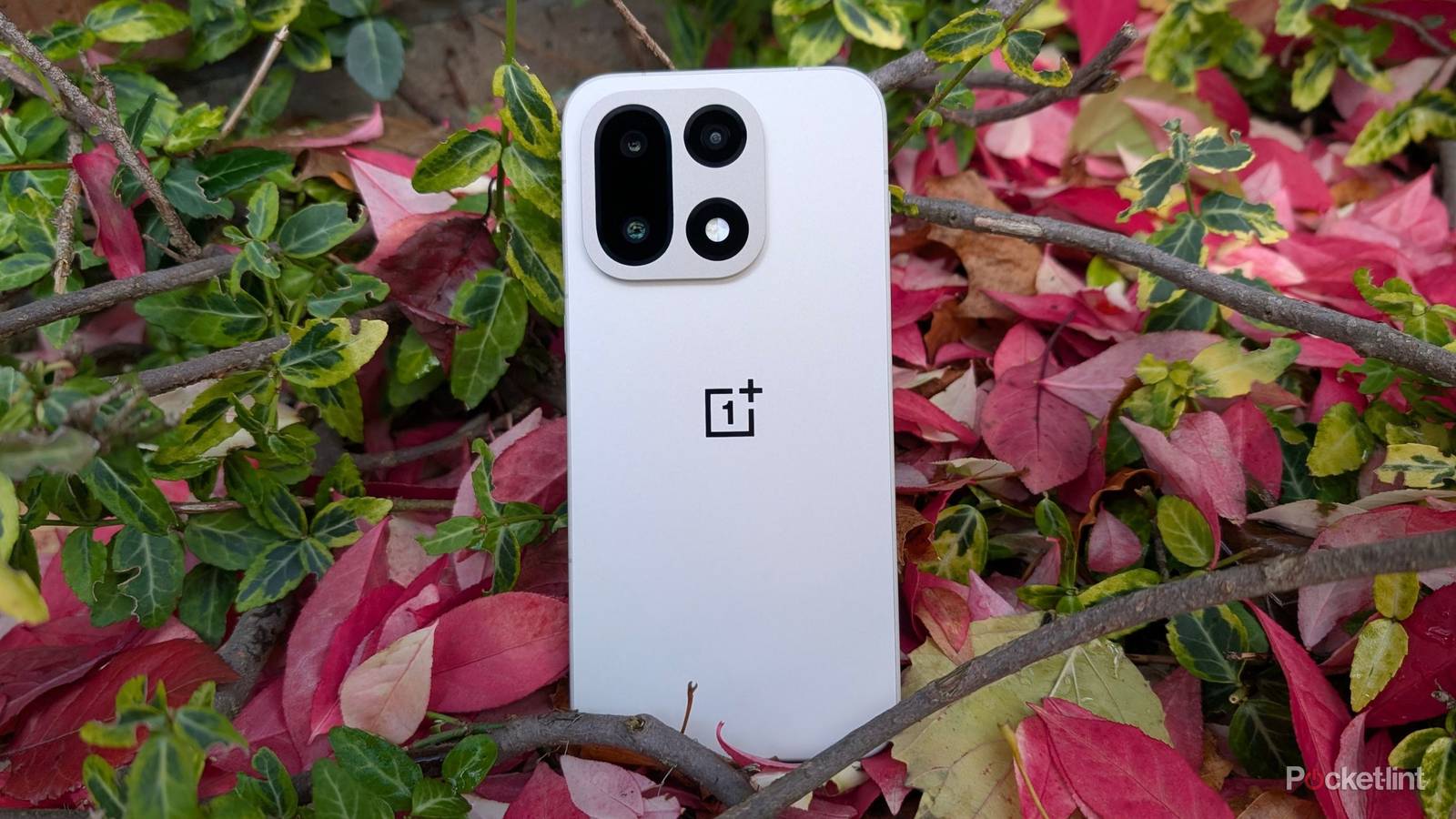With the 15, OnePlus is back at it again with another flagship Android smartphone, and, as ever, the handset is jam-packed with high-tech internal components all wrapped inside a slim and attractive package. In direct contrast to its predecessors, however, the 15 adopts a new external design language that does away with the fan-favorite Alert Slider button, while also ditching the years-long Hasselblad partnership and the associated color science tech that had arisen from the now-defunct camera collaboration.
With a redesigned chassis that conforms to the competition (rather than doubling down on the uniqueness of the OnePlus 13’s design), as well as with the loss of Hasselblad-powered image enhancements and the quick-access volume slider, I certainly had concerns over whether the 15 would still carry forward the charm of its forebears. Then again, with trailblazing hardware specifications like a massive 7,300mAh battery, UFS 4.1 storage, and a 165Hz AMOLED display panel, I was equally enthralled with the product prior to even booting it up for the first time.
Fast-forward by about a week, and I’ve discovered that there’s a lot to love about the OnePlus 15. The handset launches globally on November 13 of this year, following its October 27 release in China. In North America, it’s available in a 12GB of RAM + 256GB of internal storage configuration for $900 USD / $1.300 CAD, and in a 16GB of RAM + 512GB of storage variant for $1,000 USD / $1,400 CAD. The base model can be purchased in the infinite black colorway, while the step-up model can also be had in ultra violet or sand storm.
It should be noted that due to the current US government shutdown, which has resulted in a delay of certification approval from the Federal Communications Commission (FCC), the OnePlus 15’s US availability is temporarily paused. OnePlus recommends signing up for notifications to stay up-to-date on availability by visiting OnePlus.com/us.
Here are my impressions after using the sand storm OnePlus 15 out in the real world over the past several days.

- Brand
-
OnePlus
- SoC
-
Qualcomm Snapdragon 8 Elite Gen 5
- Display
-
6.78-inch 165Hz OLED
- RAM
-
12GB, 16GB
- Storage
-
256GB, 512GB, 1TB
- Battery
-
7,300mAh
The OnePlus 15 is a flagship Android 16 smartphone that ships with a Snapdragon 8 Elite Gen 5 chipset, a 165Hz LTPO AMOLED display, and a 7,300 mAh internal battery.
It feels super premium
The OnePlus 15 is silky-smooth to the touch
With the OnePlus 15, it’s hard not to start the conversation with design. Unlike last year’s OnePlus 13, which featured a curved chassis and a circular rear camera array, the 15 is blockier and more industrial, while also sporting a new squared-off camera protrusion. In short, the device looks and feels more like a modern iPhone, Galaxy, or Pixel smartphone than ever before, conforming with the sharper design language trend first popularized by Apple with its iPhone 12 series in 2020.
Subjectively, I find the new design to be attractive and minimalistic, though I’m not entirely fond of the redesigned camera hump. The square-in-the-left-hand-corner trope is tired, and I’d almost have preferred it if OnePlus had joined Google and Apple in embracing today’s newfound full-width camera plateau era of smartphone design.
…the OnePlus 15 is solidly built, with tactile, clicky buttons, zero hardware creakiness, and a luxurious-feeling etched rear glass panel.
In any case, the OnePlus 15 is solidly built, with tactile, clicky buttons, zero hardware creakiness, and a luxurious-feeling etched rear glass panel that I find extremely satisfying to run my finger across. The side rails are made of aluminum, but with a twist: exclusive to the beige-toned sand storm colorway I have on deck, a unique Micro-Arc Oxidation (MAO) technique has been applied to the metal via a “plasma-based electrochemical process.”
According to OnePlus, this MAO technique results in a mid-frame that’s 3.4 times harder than an aluminum mid-frame and 1.3 times as tough as a titanium one. While I can’t vouch yet for its durability, I will say that the ceramic-esque MAO finish looks and feels stellar.
Its screen is the speediest I’ve ever used
165Hz outclasses most of the competition
With the OnePlus 15, the company decided to buck the typical high-end smartphone trend of shipping with an adaptive 120Hz OLED panel at Quad High Definition Plus (HQD+) resolution. Instead, the 15’s 6.78-inch display is capable of a super-speedy 165Hz, while sacrificing slightly on the resolution front (1272 x 2772 pixels for a pixel density of 450 ppi, versus the 13’s 510 ppi). There’s no two ways about it: the OnePlus 15 has an unbelievably excellent display, with crisp colors, Dolby Vision and HDR10+ support, and a pulse-width modulation (PWM) dimming speed of 2160Hz for improved eye comfort.
In the real world, I personally can’t tell much, if any, difference between 120Hz and 165Hz refresh rates, though your mileage may vary. I also found no real-world consequence to the slightly lower pixel density — everything is still pin sharp. If you’re an avid mobile gamer, and if you’re hoping to put the metal to the metal with the phone’s all-new Snapdragon 8 Elite Gen 5 processor, then the added screen responsiveness will most definitely come in handy.
Silicon-carbon technology makes this possible
In typical OnePlus fashion, the 15 is at the top of its game when it comes to state-of-the-art internal specifications. Aside from being one of the first smartphones to launch with Qualcomm’s Snapdragon 8 Elite Gen 5 chipset, it features the fastest UFS 4.1 flash storage tech available, one of the highest PWM displays out there, and it’s one of the few handsets to feature full IP68/IP69K water and dust resistance (capable of being immersed into 6.56 feet (2 meters) of fresh water for up 30 minutes, while being able to survive high pressure water jets at hot temperatures).
For me, however, the crowning jewel of the OnePlus 15′ specification lineup is its insanely huge 7,300 mAh internal battery pack. Using new silicon-carbon battery chemistry, the company has been able to squeeze more energy into a smaller physical package, and it simply blows the rest of the Western mobile competition out of the water. By comparison, the Samsung Galaxy S25 Ultra has a 5,000 mAh battery, and the Google Pixel 10 Pro XL has a 4,870 mAh power pack — we’ve yet to see these respective lineups switch away from traditional lithium-ion and towards a more energy-dense silicon-carbon solution.
In practice, the OnePlus 15 is a stamina champ. Even with heavy video streaming, video recording, image capturing, and GPS usage, I regularly end the day with 25% battery left in the tank, which gives me more than enough wiggle room to work with. Of course, we aren’t entirely sure whether silicon-carbon batteries will prove as hearty as their lithium-ion counterparts in the long run, but that’s something that will make itself known in due time.
OxygenOS 16 is pretty slick
Say hello to Parallel Processing 2.0
Out of the box, the OnePlus 15 ships with OxygenOS 16 running on top of Android 16. OxygenOS is one of the more customizable and feature-rich Android skins out on the market, and I find that it balances simplicity and flexibility reasonably well. The Apple-inspired visual design is a bit take-it-or-leave-it in my opinion ( I vastly prefer Google’s own Material 3 Expressive UI), but OxygenOS does feel like it’s still doing its own thing as well, which I appreciate.
OnePlus has implemented a technology it calls Parallel Processing 2.0 into the software stack, which allows for smoother gesture-based navigation when interacting with user interface elements. The OnePlus 13 introduced Parallel Processing when opening and closing apps last year, and 2.0 expands on this by working across the App Drawer, Global Search, launching widgets, and more. There’s a lot of technical work happening behind the scenes to make for a more fluid UI here, and I appreciate OnePlus’ dedication to providing a stutter-free phone experience.
Then, of course, there’s the AI. OxygenOS 16 is filled to the brim with AI features, including AI recorder, AI Portrait Glow, AI Scan, and AI PlayLab. Notably, OnePlus has built a dedicated Plus Mind space within the interface that acts as a Google Gemini-powered hub for all your screenshots, similar to Nothing’s Essential Space. There’s even a dedicated AI Plus key here, though this comes at the unfortunate expense of the classic Alert Slider I’ve come to rely on over the years for silencing notifications without having to look at my phone screen.
This device was provided to Pocket-lint by OnePlus.











